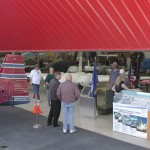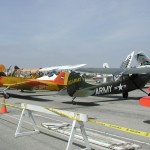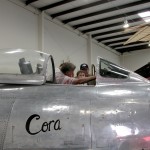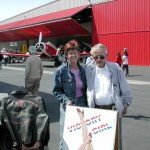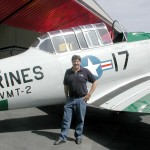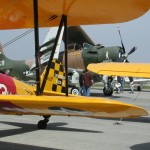By Larry W. Bledsoe
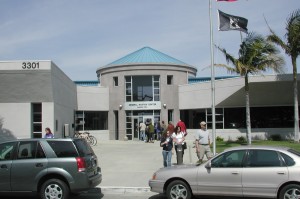
The General Aviation Center granted public access to the Zamperini Field flight line and the Western Museum of Flight.
After being forced out of its longtime location on Hawthorne Airport, the Western Museum of Flight is settling in at Zamperini Field in Torrance, Calif. Organizers plan to hold an official grand opening in June, but in the meantime, they held Preview Day on March 25.
Because of the planning and coordination of Cindy Macha-Skjonsby, the museum’s director, the event was very enjoyable. Access to the museum, located in the Red Baron Hangar # 3, and the flight line was restricted to passage through the General Aviation Center. As people wandered through the museum displays, some recognized items from the previous museum location, while others wondered about missing displays. Because of the limited space at the new location, some museum assets are in temporary storage. Likewise, the museum’s Douglas DC-3, North American XAT-6E, Northrop YF-17 and YF-23, Martin P-5A and Grumman F-1A are stored at El Segundo. Its Douglas A-4 and Northrop F-89 are at Cable Airport.
Airport pilots displayed their aircraft, including air show performer John Colver, who parked his T-6, War Dog, in front of the museum’s hangar, to give people a closer look. After the morning cloud cover burned off, the flight line quickly filled with warbirds and classic aircraft, flown in from all over the Southland.
Smiling children climbed into the seats of an R22, displayed in the museum hangar by Robinson Helicopter. Visitors lined up to see the cockpit of the museum’s F-86 Sabre, while a docent answered questions.
The Commemorative Air Force, Cable Airport, displayed an Antonov An-2 Colt, the world’s largest single-engine biplane. In full uniform, World War II B-17 pilot Roy Test answered questions on the flight line about the aircraft.

The early crowd checks out the north end of the Western Museum of Flight, which fills a double hangar.
Two Douglas AD Skyraiders and a T-28 did a formation break over the field, and a couple of pilots flew their Chinese CI-6A Nanchang trainers in for the show. Bright-eyed children were filled with awe and excitement to see the planes and museum displays, and many older guests reminisced about the planes they had flown or helped build in their younger days.
While enjoying the day, various people shared stories, including Browning “Brownie” Spaulding, who showed up with his 1934 Torrance High School yearbook, which had been signed by the airport’s namesake. Louis Zamperini, two years older than Spaulding, was a junior at the time. The track star went on to set a world interscholastic mile record that remained unbroken for 20 years. Two years later, he was the first American to finish the 5,000-meter race at the 1936 Berlin Olympics. While attending the University of Southern California in 1938, Zamperini set a new National Collegiate Athletic Association mile record that stood for 15 years.
During WWII, Zamperini went missing in action, on May 23, 1943, when his plane crashed in the South Pacific. After spending 47 days adrift on an open raft, he was rescued by the Japanese and spent the next two and a half years as a prisoner of war in Japan. He was declared killed in action, but returned to Torrance with a hero’s welcome. On Dec. 7, 1946, Torrance Airport, which had been a military base during the war, was officially dedicated as Zamperini Field.
Spaulding brought the yearbook to the event, hoping to catch Zamperini and have him sign the book again, more than seven decades after the first signature. Zamperini was happy to oblige.
For more information about the Western Museum of Flight, visit [http://www.wmof.com].
- Display cases, models and the museum library are located in the south end of the hangar.
- Cindy Macha-Skjonsby, the museum’s director, pauses in front of a plane parked in the taxiway across from the museum.
- The flight line was filled with planes, starting with Chinese CI-6A Nanchang trainers on the east end.
- Colorful planes filled the flight line and taxiway.
- Enthusiasts of all ages lined up to look inside the F-86 Sabre’s cockpit, while a docent answered questions.
- Artist Jerri Bergen greets Browning Spaulding at her Victory Girl display booth.
- Long time air show performer John Colver parked War Dog, his T-6, in the taxiway across from the museum’s hangar.
- Because the flight line was full, late arriving warbirds, like this AD Skyraider, parked in the taxiway.
- One of the many planes flown in for the event was a highly polished, bare metal 1939 Lockheed 12A Electra Junior, owned by Les and Susan Whittlesey of Coto De Caza, Calif.












